
San Miguel de Tucumán: The Cradle of Argentine Independence
Discover San Miguel de Tucumán, the birthplace of Argentine independence, where history, culture, and natural beauty come together to create an unforgettable experience.
San Miguel de Tucumán, often simply called Tucumán, is a city rich in history and culture. As the site where Argentina declared its independence in 1816, it is a place of great national pride. The city offers a mix of colonial architecture and modern amenities, making it a fascinating destination for both history buffs and casual tourists alike. The Plaza Independencia is the heart of the city, surrounded by historic buildings such as the Government House and the Cathedral of San Miguel de Tucumán. Nearby, you can visit the Casa Histórica de la Independencia, where the declaration of independence was signed. This museum offers a glimpse into the pivotal moments that shaped the nation. Beyond its historical sites, Tucumán is also known for its vibrant cultural scene. The city hosts numerous festivals throughout the year, celebrating everything from folklore music to modern art. The local cuisine is another highlight, with empanadas tucumanas being a must-try dish. Nature lovers will also find much to appreciate in Tucumán. The nearby Parque Sierra de San Javier offers hiking trails and breathtaking views. For those interested in a more relaxed experience, the city's parks and gardens provide a peaceful retreat from the hustle and bustle of urban life.
Local tips in San Miguel de Tucumán
- Visit the Casa Histórica de la Independencia early in the morning to avoid crowds.
- Try the local empanadas tucumanas; they are different from those you'll find elsewhere in Argentina.
- If you plan to hike in Parque Sierra de San Javier, bring plenty of water and wear comfortable shoes.
- Use local taxis or ride-sharing apps to get around the city; public transportation can be less reliable.
- Check the local festival calendar; attending a traditional folklore festival can be a unique cultural experience.
Neighbourhoods in San Miguel de Tucumán
San Miguel de Tucumán: The Cradle of Argentine Independence
San Miguel de Tucumán, often simply called Tucumán, is a city rich in history and culture. As the site where Argentina declared its independence in 1816, it is a place of great national pride. The city offers a mix of colonial architecture and modern amenities, making it a fascinating destination for both history buffs and casual tourists alike. The Plaza Independencia is the heart of the city, surrounded by historic buildings such as the Government House and the Cathedral of San Miguel de Tucumán. Nearby, you can visit the Casa Histórica de la Independencia, where the declaration of independence was signed. This museum offers a glimpse into the pivotal moments that shaped the nation. Beyond its historical sites, Tucumán is also known for its vibrant cultural scene. The city hosts numerous festivals throughout the year, celebrating everything from folklore music to modern art. The local cuisine is another highlight, with empanadas tucumanas being a must-try dish. Nature lovers will also find much to appreciate in Tucumán. The nearby Parque Sierra de San Javier offers hiking trails and breathtaking views. For those interested in a more relaxed experience, the city's parks and gardens provide a peaceful retreat from the hustle and bustle of urban life.
When is the best time to go to San Miguel de Tucumán?
Iconic landmarks you can’t miss
Casa Histórica - Museo Nacional de la Independencia
Explore the Casa Histórica - Museo Nacional de la Independencia, a vital piece of Argentina's history in San Miguel de Tucumán.

Independencia Square
Discover the vibrant atmosphere of Independencia Square in San Miguel de Tucumán, where history, culture, and nature come together in perfect harmony.
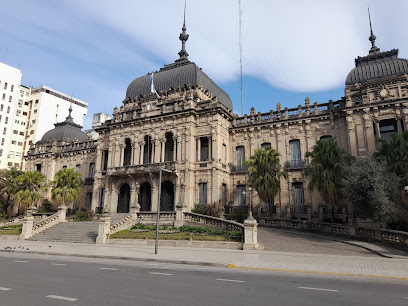
Parque 9 de Julio
Discover the serene beauty of Parque 9 de Julio, San Miguel de Tucumán's lush city park, perfect for relaxation and cultural experiences.
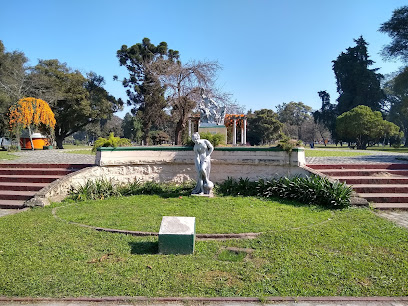
Plaza Urquiza
Experience the heart of San Miguel de Tucumán at Plaza Urquiza, a lush park perfect for relaxation, picnics, and cultural events in Argentina.
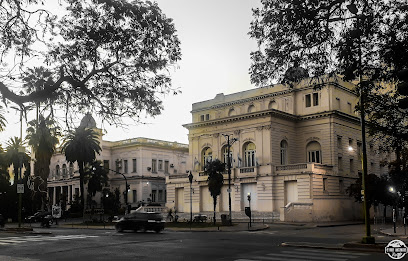
Catedral de Nuestra Señora de la Encarnación
Discover the breathtaking Catedral de Nuestra Señora de la Encarnación in San Miguel de Tucumán, a stunning blend of history, art, and spirituality.
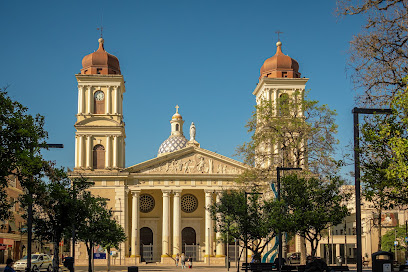
Museo de la Industria Azucarera - Casa Obispo Colombres
Explore the rich heritage of sugar production at the Museo de la Industria Azucarera, a captivating museum in San Miguel de Tucumán.
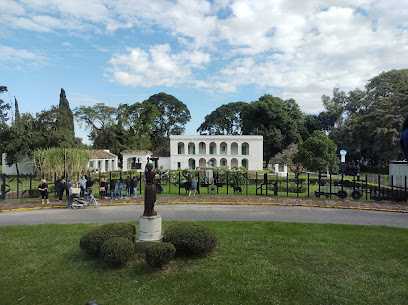
Goverment house
Discover the historical significance and stunning architecture of the Government House in Tucumán, a must-see destination for every tourist.
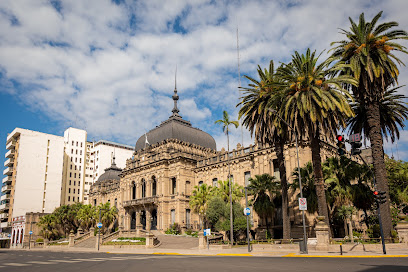
Monumento al Bicentenario
Discover the historical significance and architectural beauty of the Monumento al Bicentenario in San Miguel de Tucumán, a must-visit destination for every traveler.
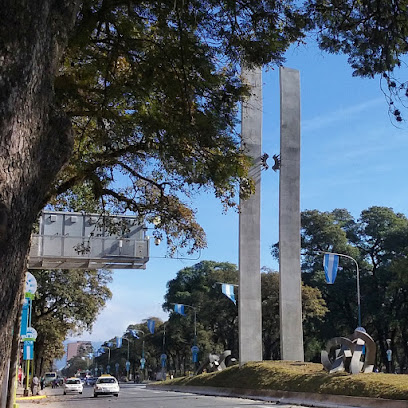
casa de Tucumán
Discover the Casa de Tucumán, where Argentina's independence was declared, a rich historical landmark in San Miguel de Tucumán, steeped in culture and heritage.
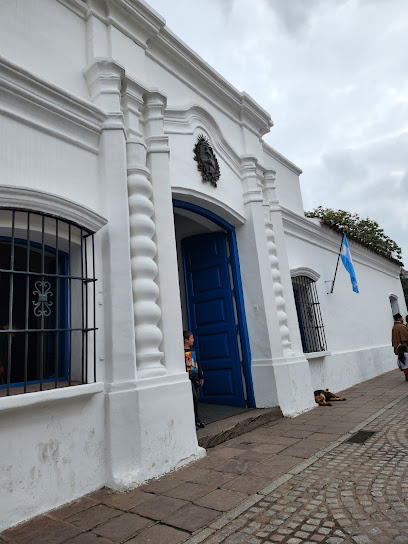
Museo Casa Padilla
Discover the artistic heritage of Tucumán at Museo Casa Padilla, an art museum showcasing local and international talent in a historic setting.
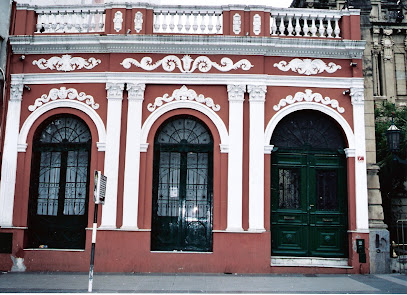
Museo Histórico Nacional Nicolás Avellaneda
Explore the rich cultural tapestry of Argentina at Museo Histórico Nacional Nicolás Avellaneda in San Miguel de Tucumán, a captivating local history museum.

Museo Iramaín
Explore the rich cultural tapestry of Tucumán at Museo Iramaín, a must-see for art and history enthusiasts visiting San Miguel de Tucumán.
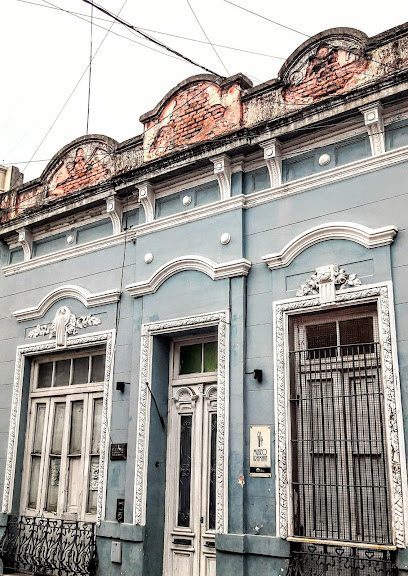
Plaza Temática
Explore the vibrant history and art of Tucumán at Plaza Temática, a cultural gem in San Miguel de Tucumán that captivates every visitor.
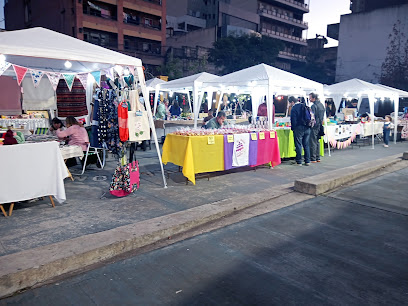
Homenaje a los Heroes Tucumanos Caídos en Malvinas
Visit the Homenaje a los Heroes Tucumanos Caídos en Malvinas, a historical landmark honoring the valor of soldiers lost in the Falklands War, in Tucumán, Argentina.
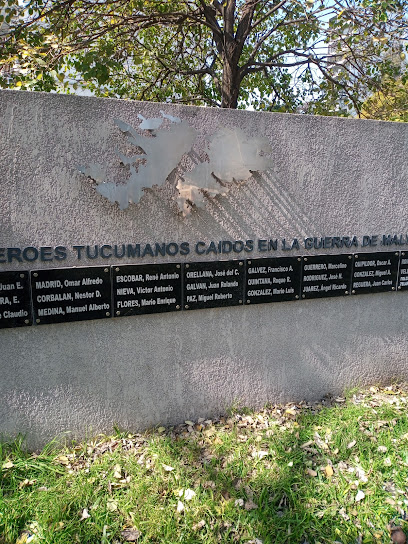
Monumento Entrada a la ciudad de San Miguel de Tucumán
Explore the Monumento Entrada a la Ciudad de San Miguel de Tucumán, a stunning memorial showcasing the rich history and culture of Tucumán Province, Argentina.
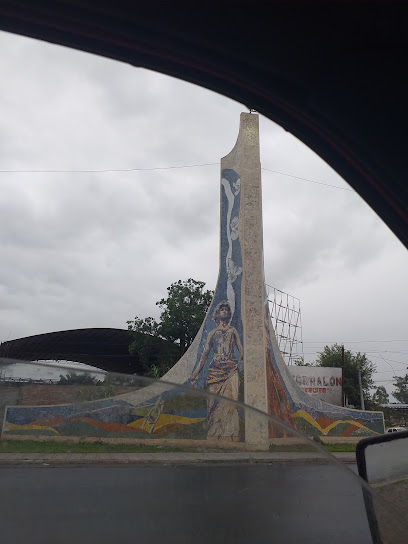
Unmissable attractions to see
Casa Histórica - Museo Nacional de la Independencia
Explore Argentina's path to independence at Casa Histórica, a national museum showcasing the nation's rich history and heritage.
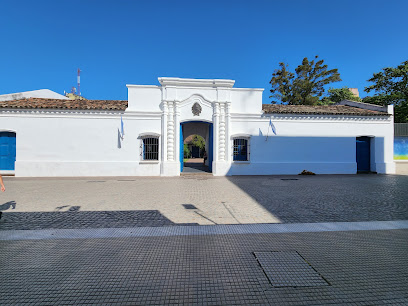
Independencia Square
Experience the vibrant culture and rich history of San Miguel de Tucumán at Independencia Square, a must-visit urban oasis for travelers.
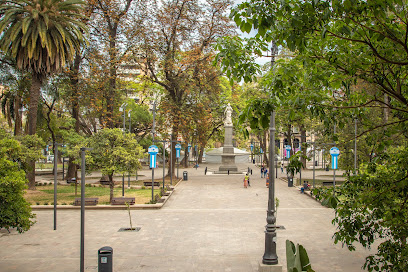
Parque 9 de Julio
Explore the serene beauty and cultural richness of Parque 9 de Julio, the heart of San Miguel de Tucumán's urban landscape.
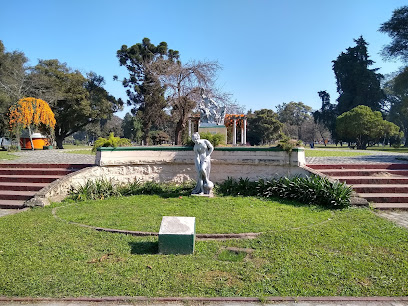
Plaza Urquiza
Explore the heart of Tucumán at Plaza Urquiza, a vibrant park filled with culture, relaxation, and local charm.
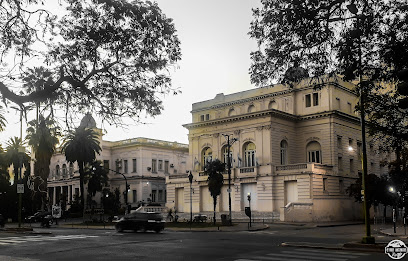
San Martin Square
Discover the beauty and culture of San Martin Square, an enchanting park in San Miguel de Tucumán, perfect for relaxation and local experiences.
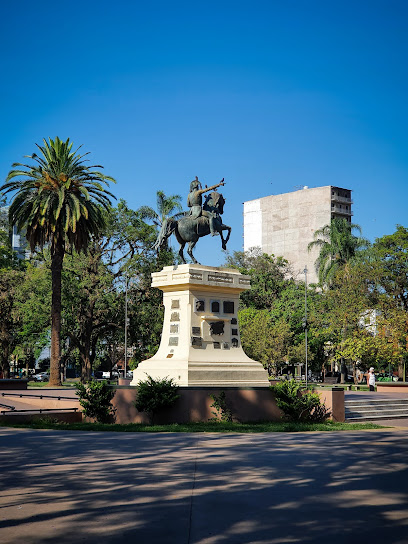
Guillermina Park
Explore the lush landscapes and vibrant community of Guillermina Park in San Miguel de Tucumán, a perfect spot for relaxation and recreation.
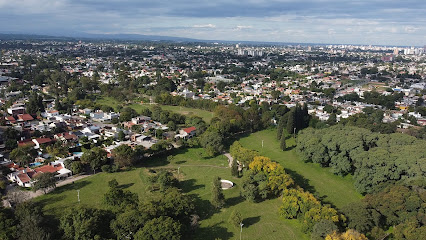
Funicular Trail
Discover the breathtaking views and natural beauty of the Funicular Trail in Tucumán, Argentina, a gem for outdoor enthusiasts and nature lovers.
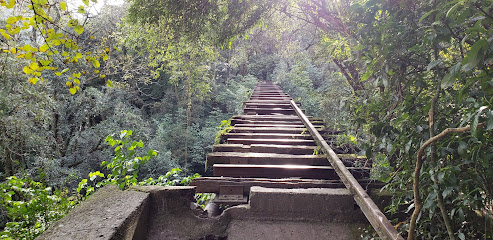
El Rosedal
Explore the vibrant rose gardens and serene landscapes of El Rosedal in San Miguel de Tucumán, a tranquil retreat for nature lovers.
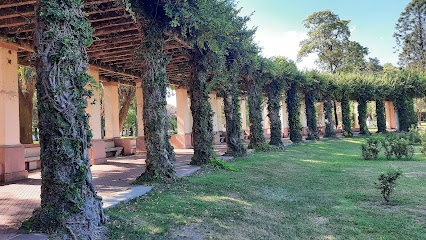
Celestino Gelsi Dam (El Cadillal)
Discover Celestino Gelsi Dam in Tucumán Province - an enchanting tourist attraction perfect for nature lovers and outdoor adventurers alike.
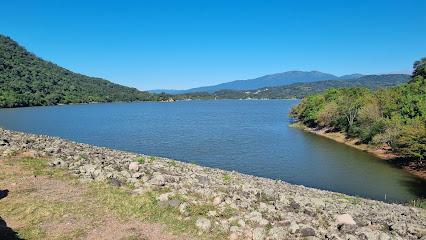
Noque River Waterfall Trail
Discover the beauty of nature at the Noque River Waterfall Trail, a breathtaking hiking area in San Javier, Tucumán Province, Argentina.
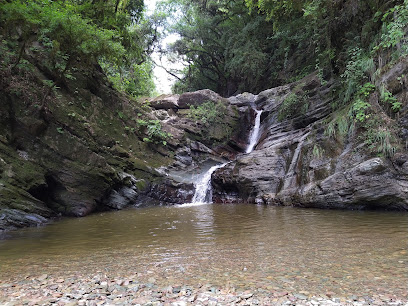
Catedral de Nuestra Señora de la Encarnación
Discover the stunning architecture and rich history of Catedral de Nuestra Señora de la Encarnación in San Miguel de Tucumán, a must-see for every traveler.
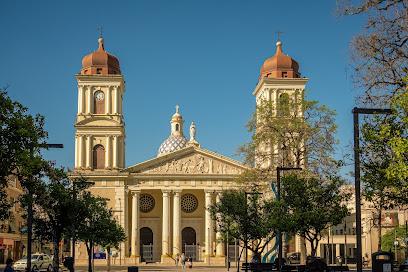
Catedral de Nuestra Señora de la Encarnación
Explore the stunning Catedral de Nuestra Señora de la Encarnación, a remarkable blend of Baroque architecture and rich cultural heritage in San Miguel de Tucumán.
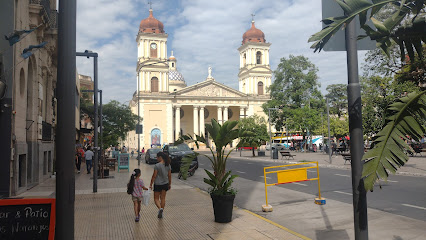
Museo de la Industria Azucarera - Casa Obispo Colombres
Explore the history of sugar production at Museo de la Industria Azucarera, an open-air museum in San Miguel de Tucumán, Argentina.
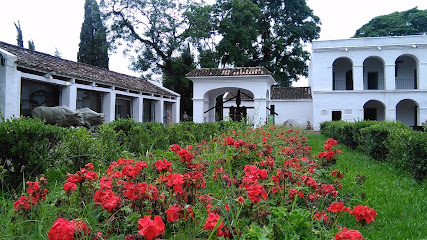
Miguel Lillo Museum of Natural Sciences
Explore the Miguel Lillo Museum of Natural Sciences, a treasure trove of biodiversity and natural wonders in San Miguel de Tucumán, Argentina.
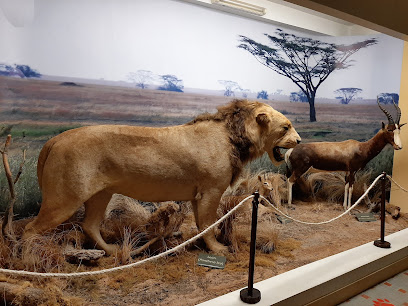
Casa Belgraniana Solar Historico
Immerse yourself in Argentina's rich history at Casa Belgraniana Solar Historico, a captivating museum in San Miguel de Tucumán showcasing the past.

Essential places to dine
Il Postino
Experience the flavors of Argentina at Il Postino in San Miguel de Tucumán - where culinary tradition meets modern taste.
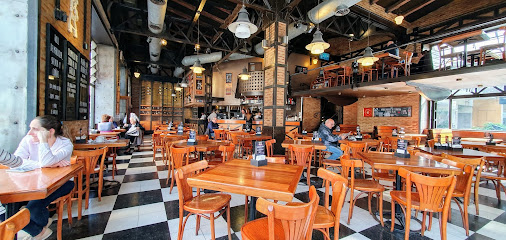
El Molino
Discover authentic Argentine flavors at El Molino, where grill perfection meets delightful breakfasts in San Miguel de Tucumán.
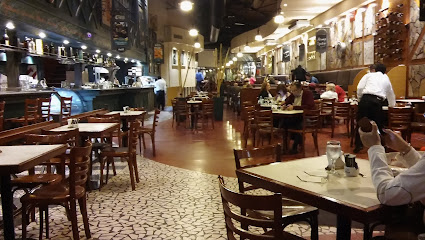
Americano Restobar
Experience the fusion of traditional Argentine flavors and modern cuisine at Americano Restobar in San Miguel de Tucumán.
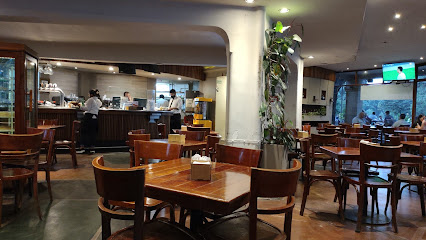
La Leñita Restaurante
Experience authentic Argentine cuisine at La Leñita Restaurante in San Miguel de Tucumán - famous for its grilled meats and inviting atmosphere.
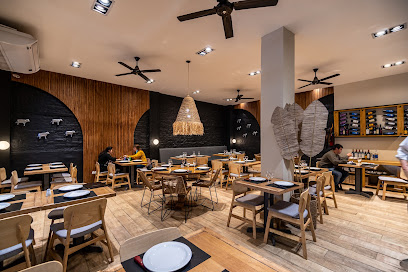
El Parador Restaurant
Discover the flavors of Argentina at El Parador Restaurant – where family-friendly dining meets authentic local cuisine in Tucumán.
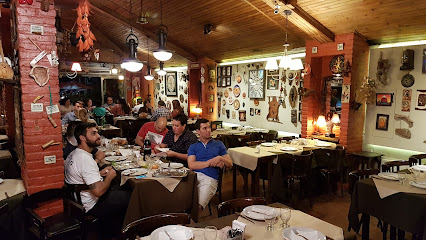
Aló Tienda & Cafe
Experience the rich flavors of Tucumán at Aló Tienda & Cafe, where every cup of coffee tells a story and breakfast becomes an adventure.
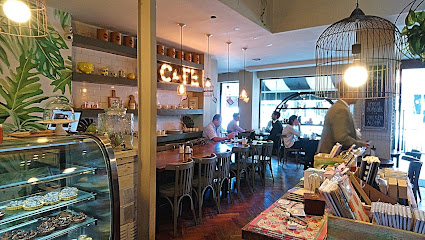
Ernestina
Experience the rich flavors of Argentina at Ernestina in San Miguel de Tucumán – where every meal is a celebration of tradition.
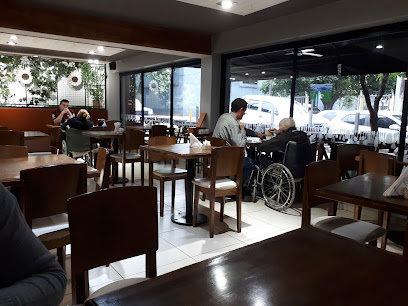
Mi Nueva Estancia
Experience authentic Argentinian cuisine at Mi Nueva Estancia – where every meal tells a story.

Bar America
Discover the flavors of Argentina at Bar America in San Miguel de Tucumán – where every meal is grilled to perfection.
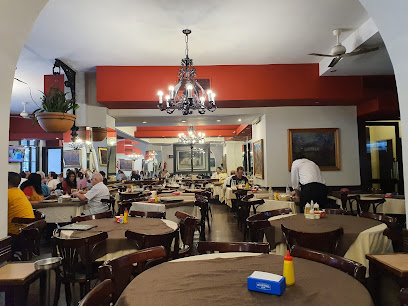
Beckett's Tucumán
Discover culinary delights and vibrant live music at Beckett's Tucumán, your go-to restaurant and concert hall in San Miguel de Tucumán.
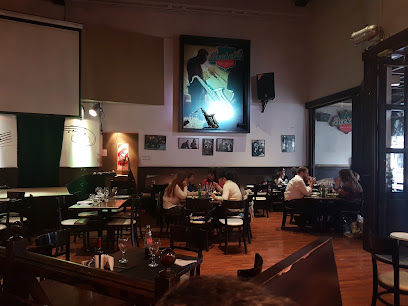
El Sultan
Experience the rich flavors of Middle Eastern cuisine at El Sultan in San Miguel de Tucumán - a must-visit culinary destination.
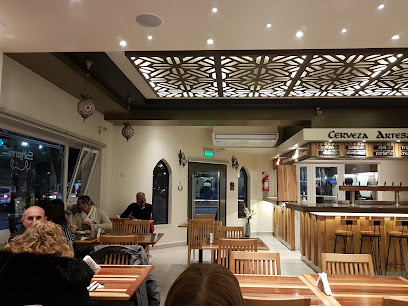
El Bodegón
Experience the essence of Argentine cuisine at El Bodegón in San Miguel de Tucumán—where grilled perfection meets local tradition.
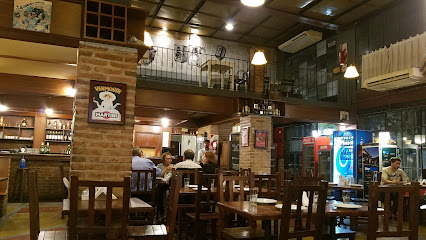
El Patio Restobar
Discover authentic Argentine flavors at El Patio Restobar, a grill paradise in San Miguel de Tucumán's vibrant culinary scene.

Bona Restó
Discover Bona Restó: A culinary treasure in San Miguel de Tucumán offering exquisite grilled dishes and aromatic espresso delights.
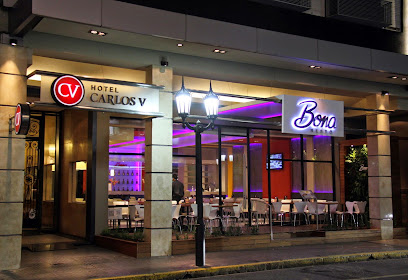
El Balón
Discover authentic Lebanese cuisine at El Balón in San Miguel de Tucumán—where every dish tells a story of tradition and flavor.
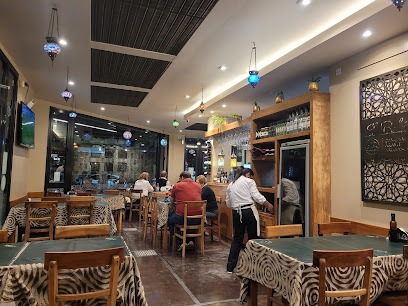
Markets, malls and hidden boutiques
Portal Tucumán
Explore Portal Tucumán, the ultimate shopping destination in Yerba Buena, offering diverse shops, entertainment, and culinary delights in one vibrant location.
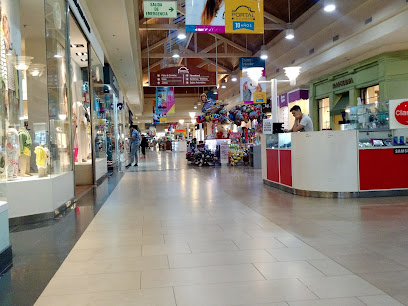
Shopping Garden
Explore Shopping Garden in San Miguel de Tucumán: Your ultimate shopping destination for fashion, food, and family fun.
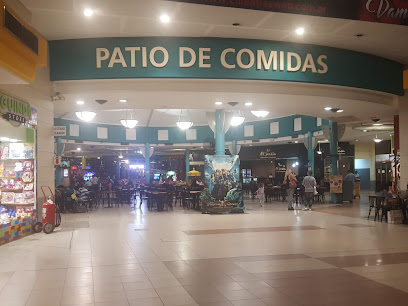
San Juan Department Stores
Shop the latest fashion trends at San Juan Department Stores, your ultimate destination for formal wear and lingerie in San Miguel de Tucumán.
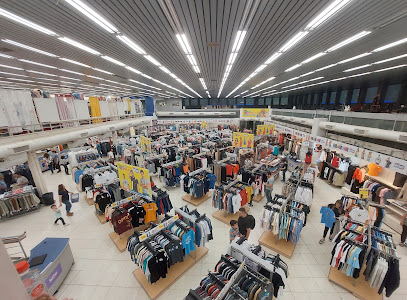
Legion Comics
Explore Legion Comics, a vibrant haven for comic lovers, offering a vast selection of comics, manga, and a cozy café atmosphere in San Miguel de Tucumán.
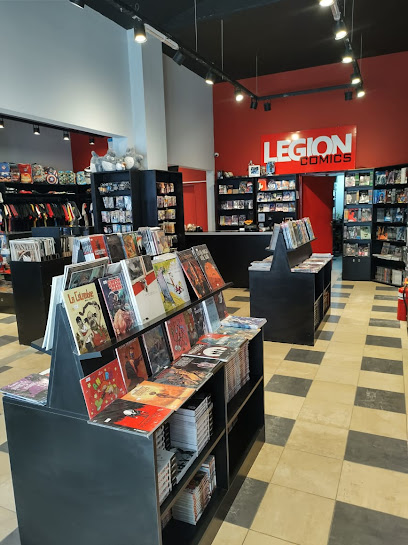
Metal
Explore the trendsetting world of men's fashion at Metal, a premier clothing store in San Miguel de Tucumán's vibrant shopping scene.
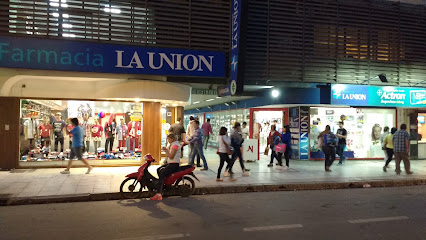
Art store
Explore a vibrant art supply store in San Miguel de Tucumán, perfect for artists and creatives seeking inspiration and quality materials.
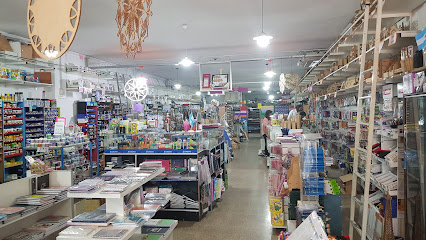
Gallery San Martin
Discover the vibrant shopping scene at Gallery San Martin in San Miguel de Tucumán, where local culture meets international brands for a unique retail experience.
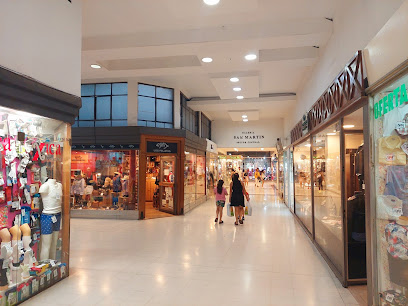
Isadora
Explore Isadora in San Miguel de Tucumán – your go-to destination for trendy fashion accessories, bags, jewelry, and beauty products.
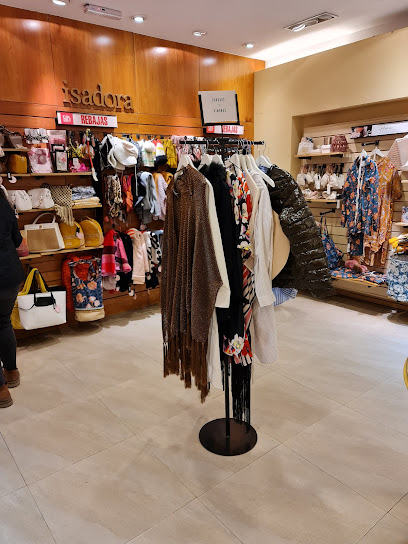
Paseo Baires
Explore Paseo Baires, a vibrant shopping mall in San Miguel de Tucumán, where unique shops and local culture await every visitor.
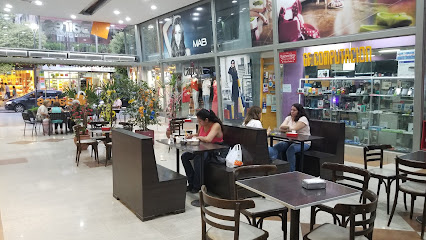
Amsterdam Love Store - Sex Shop Tucumán
Explore intimacy and connection at Amsterdam Love Store, Tucumán's premier destination for adult products and personal exploration.

La Rockeria
Discover La Rockeria, San Miguel de Tucumán's ultimate destination for trendy clothing and unique fashion accessories, blending local flair with contemporary styles.
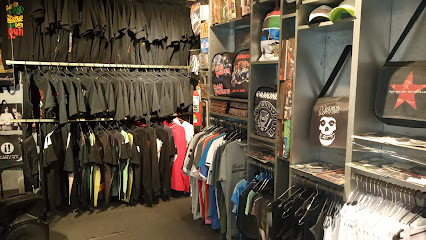
LA TIENDA
Discover unique fashion at La Tienda, a premier dress store in San Miguel de Tucumán, offering styles that blend local charm with contemporary trends.
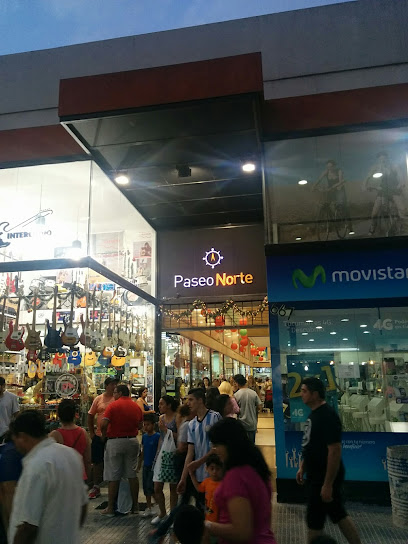
Bond Street
Explore stylish fashion at Bond Street, your go-to destination for trendy men's and women's clothing in San Miguel de Tucumán.
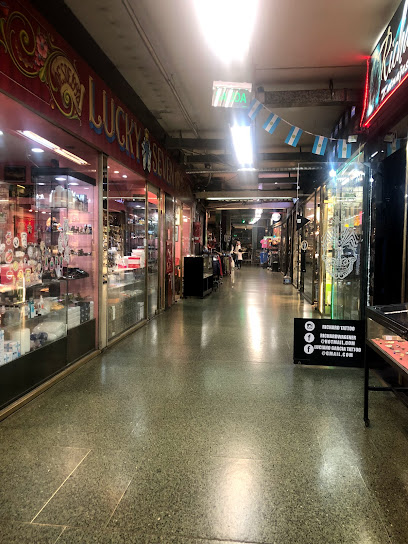
Ganum Show Moda
Explore Ganum Show Moda in Tucumán for unique gifts and high-quality fabrics that capture the essence of Argentine craftsmanship.

Devré
Experience the best of local fashion at Devré, San Miguel de Tucumán's premier clothing destination for stylish travelers.

Essential bars & hidden hideouts
Bar Irlanda
Discover the vibrant nightlife at Bar Irlanda in San Miguel de Tucumán – where local culture meets lively entertainment.
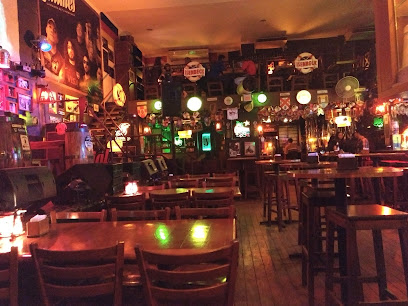
Beckett's Tucumán
Experience the best of Tucumán's culinary scene at Beckett's, where delicious food meets vibrant entertainment in a welcoming atmosphere.

Porter Brewery
Discover the vibrant atmosphere and exquisite craft beers at Porter Brewery, a top brewpub experience in San Miguel de Tucumán.
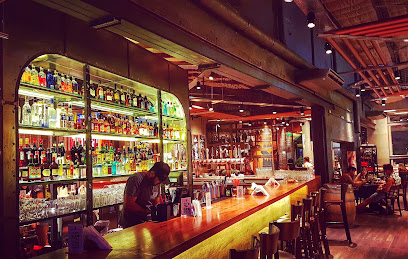
Ohana Coffee & Beer
Discover the perfect blend of coffee and craft beer at Ohana Coffee & Beer in San Miguel de Tucumán, a must-visit for every traveler.
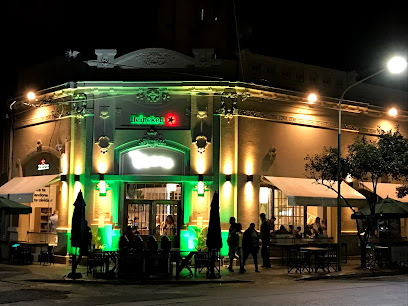
Dot Bar Tucumán
Discover Dot Bar Tucumán - A lively beer hall in San Miguel de Tucumán offering a fantastic selection of craft brews and a vibrant atmosphere.
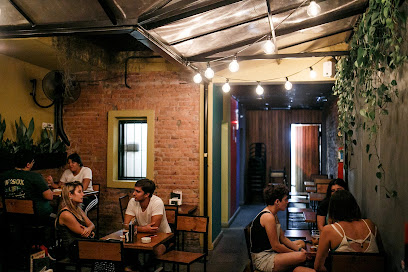
Eventos
Discover the vibrant nightlife at Eventos, a premier pub in San Miguel de Tucumán, where culture, fun, and great drinks come together.

CAPRICE - BAR
Discover Caprice Bar in San Miguel de Tucumán: a vibrant brewpub offering craft beers and local cuisine in a lively atmosphere.
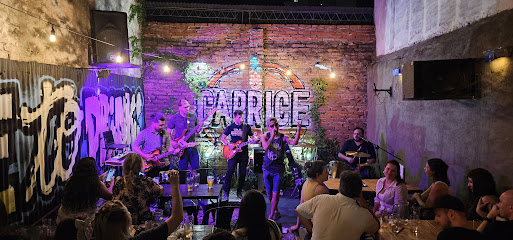
Roberthino Restobar
Discover the culinary delights of Roberthino Restobar in San Miguel de Tucumán, where traditional flavors meet modern gastropub vibes.
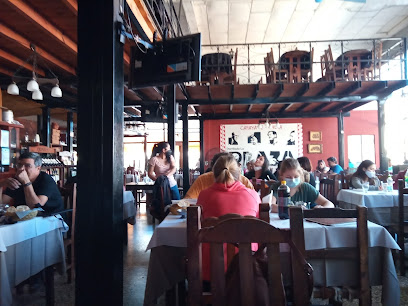
BAR SS. MANHATTAN
Discover the lively BAR SS. MANHATTAN in San Miguel de Tucumán, where cocktails meet local flavors in a vibrant nightlife setting.
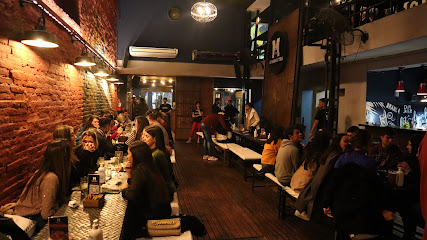
Empire Tucumán
Discover the lively nightlife at Empire Tucumán, where great drinks, vibrant ambiance, and local entertainment converge in San Miguel de Tucumán.
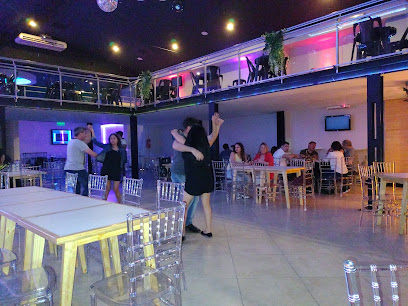
Kobakk Coffee & break
Discover the culinary delights of Kobakk Coffee & Break, a charming gastropub in San Miguel de Tucumán, where local flavors meet international cuisine.
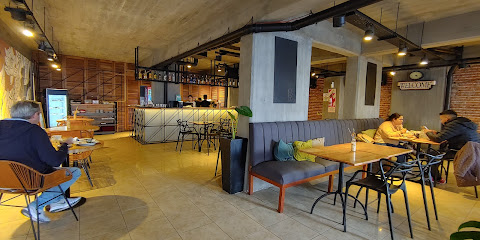
Circus Bar
Discover the lively Circus Bar in San Miguel de Tucumán, a perfect blend of cocktails, local flavors, and vibrant nightlife.
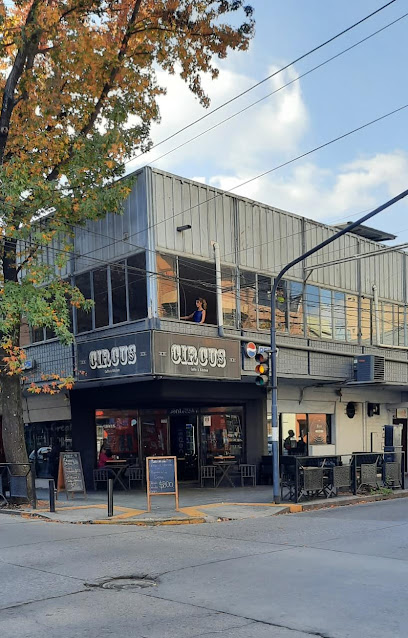
Bruck's
Experience the vibrant nightlife of San Miguel de Tucumán at Bruck's, where great drinks and lively dancing come together for an unforgettable evening.
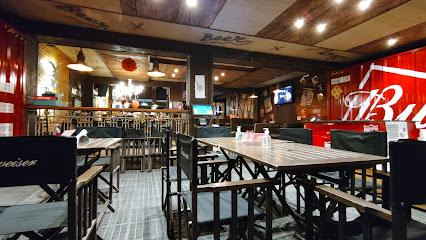
Tree Bar
Experience a fusion of local flavors and vibrant atmosphere at Tree Bar, the premier gastropub in San Miguel de Tucumán.
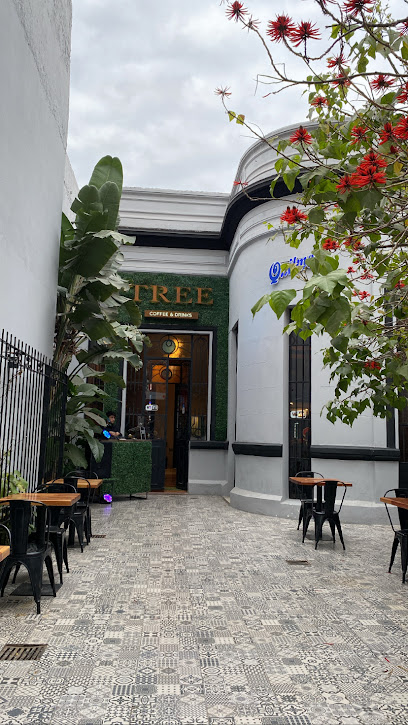
Bar Astoria
Experience the vibrant nightlife of San Miguel de Tucumán at Bar Astoria, where local flavors meet a lively atmosphere.
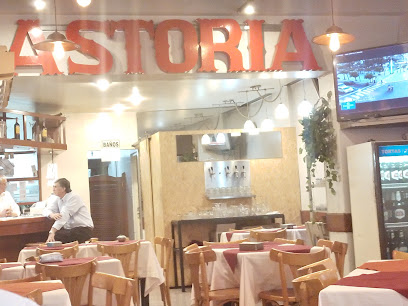
Local Phrases
-
- HelloHola
[oh-la] - GoodbyeChau
[chow] - YesSí
[see] - NoNo
[noh] - Please/You're welcomePor favor/De nada
[por fah-vor/deh nah-dah] - Thank youGracias
[grah-see-as] - Excuse me/SorryDisculpe/Perdón
[dee-skool-peh/pehr-dohn] - How are you?¿Cómo estás?
[koh-moh ehs-tahs] - Fine. And you?Bien. ¿Y tú?
[byen. ee too] - Do you speak English?¿Hablas inglés?
[ah-blahs een-glehs] - I don't understandNo entiendo
[noh ehn-tyen-doh]
- HelloHola
-
- I'd like to see the menu, pleaseMe gustaría ver el menú, por favor
[meh goos-tah-ree-ah behr ehl meh-noo, por fah-vor] - I don't eat meatNo como carne
[noh koh-moh kahr-neh] - Cheers!¡Salud!
[sah-lood] - I would like to pay, pleaseMe gustaría pagar, por favor
[meh goos-tah-ree-ah pah-gahr, por fah-vor]
- I'd like to see the menu, pleaseMe gustaría ver el menú, por favor
-
- Help!¡Ayuda!
[ah-yoo-dah] - Go away!¡Vete!
[veh-teh] - Call the Police!¡Llame a la policía!
[yah-meh ah lah poh-lee-see-ah] - Call a doctor!¡Llame a un médico!
[yah-meh ah oon meh-dee-koh] - I'm lostEstoy perdido
[ehs-toy pehr-dee-doh] - I'm illEstoy enfermo
[ehs-toy ehn-fehr-moh]
- Help!¡Ayuda!
-
- I'd like to buy...Me gustaría comprar...
[meh goos-tah-ree-ah kohm-prahr...] - I'm just lookingSólo estoy mirando
[soh-loh ehs-toy mee-rahn-doh] - How much is it?¿Cuánto cuesta?
[kwan-to kwehs-tah] - That's too expensiveEso es muy caro
[eh-soh ehs mooey kahr-oh] - Can you lower the price?¿Puede bajar el precio?
[pweh-deh bah-har ehl pree-syoh]
- I'd like to buy...Me gustaría comprar...
-
- What time is it?¿Qué hora es?
[keh oh-rah ehs] - It's one o'clockEs la una
[ehs lah oo-nah] - Half past (10)Son las diez y media
[sohn lahs dyehs ee meh-dee-ah] - MorningMañana
[mah-nyah-nah] - AfternoonTarde
[tahr-deh] - EveningNoche
[noh-cheh] - YesterdayAyer
[ah-yehr] - TodayHoy
[oy] - TomorrowMañana
[mah-nyah-nah] - 1Uno
[oo-noh] - 2Dos
[dohs] - 3Tres
[trehs] - 4Cuatro
[kwah-troh] - 5Cinco
[seen-koh] - 6Seis
[says] - 7Siete
[syeh-teh] - 8Ocho
[oh-choh] - 9Nueve
[nweh-veh] - 10Diez
[dyehs]
- What time is it?¿Qué hora es?
-
- Where's a/the...?¿Dónde está...?
[dohn-deh ehs-tah] - What's the address?¿Cuál es la dirección?
[kwal ehs lah dee-rehk-syon] - Can you show me (on the map)?¿Puede mostrarme (en el mapa)?
[pweh-deh mohs-trar-meh (ehn ehl mah-pah)] - When's the next (bus)?¿Cuándo es el próximo (colectivo)?
[kwan-doh ehs ehl prohk-see-moh (koh-lehk-tee-voh)] - A ticket (to ....)Un boleto (a ...)
[oon boh-leh-toh (ah ...)]
- Where's a/the...?¿Dónde está...?
History of San Miguel de Tucumán
-
San Miguel de Tucumán was founded on May 31, 1565, by Spanish conquistador Diego de Villarroel. Originally established at Ibatín, it was later moved to its current location in 1685 due to flooding and indigenous uprisings. The city served as a crucial settlement for Spanish colonization efforts in the region.
-
The Battle of Tucumán was a significant conflict in the Argentine War of Independence. It took place on September 24, 1812, when Argentine forces led by General Manuel Belgrano defeated the Spanish Royalist troops. This victory was pivotal in securing the northern provinces for the revolutionary cause and halting the advance of the royalists.
-
On July 9, 1816, the Congress of Tucumán declared the independence of the United Provinces of South America from Spanish rule. The declaration was made in the Casa Histórica de Tucumán, a historic house that still stands today and serves as a museum commemorating this momentous event.
-
In the late 19th and early 20th centuries, San Miguel de Tucumán experienced an economic boom driven by the sugar industry. The city became a major center for sugar production, attracting immigrants and fostering economic growth. The legacy of this period is evident in the numerous sugar mills and the wealth of historic architecture in the city.
-
Established in 1914, the National University of Tucumán (UNT) has played a crucial role in the academic and cultural life of the city. As one of Argentina's prominent universities, it has contributed significantly to research, education, and the arts, enriching the cultural fabric of San Miguel de Tucumán.
-
Today, San Miguel de Tucumán is known for its vibrant cultural scene, including music, theater, and dance. The city hosts numerous festivals, such as the Tucumán Music Festival and the National Folklore Festival, which celebrate the rich cultural heritage of the region. The city's historical sites, museums, and theaters continue to attract visitors from around the world.
San Miguel de Tucumán Essentials
-
San Miguel de Tucumán is well connected by air, road, and rail. The Teniente General Benjamín Matienzo International Airport (TUC) is the main gateway, with regular flights from Buenos Aires, Córdoba, and other major Argentinian cities. The airport is about 12 kilometers from the city center. For those traveling by bus, the main bus terminal in Tucumán offers connections to various destinations across Argentina. Trains also connect Tucumán to Buenos Aires, though they are less frequent and take longer.
-
Getting around San Miguel de Tucumán is convenient with several transportation options. Buses are the primary mode of public transport and cover most parts of the city. Taxis and ride-sharing services like Uber are also widely available and affordable. For those who prefer to drive, car rental services are present at the airport and various locations within the city. Bicycle rentals are another eco-friendly option for exploring the city at your own pace.
-
The official currency in Argentina is the Argentine Peso (ARS). Credit and debit cards are widely accepted in hotels, restaurants, and larger stores, but it's advisable to carry some cash for smaller establishments and markets. ATMs are plentiful, especially in the city center, but be aware of potential fees and withdrawal limits. Currency exchange services are available at the airport and various locations in the city.
-
San Miguel de Tucumán is generally a safe city for tourists, but it's important to exercise caution. Avoid walking alone at night, especially in poorly lit or unfamiliar areas. Neighborhoods like La Costanera and parts of Villa 9 de Julio have higher crime rates and should be avoided. Keep your belongings secure and be cautious of pickpockets in crowded places. Always use registered taxis or ride-sharing services, especially at night.
-
In case of emergency, dial 911 for police, fire, or medical assistance. The main hospital, Hospital Padilla, is well-equipped to handle emergencies. Pharmacies are readily available throughout the city for minor health issues. It's wise to have travel insurance that covers medical emergencies. The local tourist police can also assist in case of issues specifically affecting tourists.
-
Fashion: Do dress comfortably and modestly. Lightweight clothing is recommended due to the warm climate. Avoid overly revealing outfits. Religion: Do respect religious customs. When visiting churches, dress modestly and avoid loud conversations. Public Transport: Do have small change for bus fares. Don't eat or drink on public transport. Greetings: Do greet people with a handshake or a cheek kiss, which is common. A simple 'Hola' or 'Buenos días' is polite. Eating & Drinking: Do try local dishes such as empanadas and locro. Don't refuse food or drink offerings, as it may be considered impolite.
-
To experience San Miguel de Tucumán like a local, visit the Mercado del Norte for fresh produce and traditional foods. Engage with locals, who are generally friendly and willing to share insights about their city. Don't miss the historic Casa de Tucumán, where Argentina's independence was declared. For a unique experience, attend a local football match to feel the passion of the city's fans. Stroll through the Parque 9 de Julio, one of the largest urban parks in Argentina, for a relaxing afternoon.
Trending Landmark in San Miguel de Tucumán
-
Casa Histórica - Museo Nacional de la Independencia
-
Independencia Square
-
Parque 9 de Julio
-
Plaza Urquiza
-
Catedral de Nuestra Señora de la Encarnación
-
Museo de la Industria Azucarera - Casa Obispo Colombres
-
Goverment house
-
Monumento al Bicentenario
-
casa de Tucumán
-
Museo Casa Padilla
-
Museo Histórico Nacional Nicolás Avellaneda
-
Museo Iramaín
-
Plaza Temática
-
Homenaje a los Heroes Tucumanos Caídos en Malvinas
-
Monumento Entrada a la ciudad de San Miguel de Tucumán
Nearby Cities to San Miguel de Tucumán
-
Things To Do in Salta
-
Things To Do in Córdoba
-
Things To Do in San Pedro de Atacama
-
Things To Do in Tarija
-
Things To Do in San Juan
-
Things To Do in Antofagasta
-
Things To Do in La Serena
-
Things To Do in Coquimbo
-
Things To Do in Uyuni
-
Things To Do in Mendoza
-
Things To Do in Asuncion
-
Things To Do in Aregua
-
Things To Do in Potosi
-
Things To Do in Ypacarai
-
Things To Do in San Bernardino












